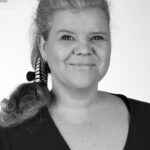Understanding and reducing the greenhouse gas emissions of bottom trawl fisheries is of importance, as it directly impacts efforts to mitigate climate change and promotes sustainable fishing practices. As a considerable part of global landings is fished using demersal trawls and vessel renewal is often mentioned as an important mitigation measure. This study compares the greenhouse gas emissions of older and newer trawlers in the Icelandic fleet, using Life Cycle Assessment methodology with the functional unit “1 kg of demersally trawled fish at landing”. The global warming potential (kg CO2-eq) from older Icelandic bottom trawlers was assessed and compared to the newer ones, where older vessels were in some cases being decommissioned. A total of 11 trawlers were assessed, providing a cross section of the Icelandic bottom trawler fleet, with respect to age, size, catch composition and onboard operations. The results show that freezer trawling was more energy-intensive compared to trawlers landing their catches chilled/superchilled. Fleet renewal alone does not explain the reduction in fuel use and greenhouse gas emissions in the Icelandic bottom trawl fleet between 2012 and 2022, highlighting the need for a comprehensive approach considering multiple factors such as catch composition, fishing ground, and vessel characteristics, which explained 87% of the emissions. Catching indicated increased fuel consumption compared to steaming. The greenhouse gas emissions allocated to each demersal fish species ranged on average from 0.5 to 1.0 kg CO2-eq/kg of the weight of demersal fish landed, and from 1.4 to 2.7 kg CO2-eq/kg of the edible part of demersal fish landed (mass allocation), where redfish stood out as having the highest emissions.
Flokkur: Greinar
The production and pollution of plastic present a significant threat to global ecosystems, where annual plastic emissions in aquatic ecosystems are projected to triple between 2020 and 2030. Currently, plastics are widely used for food packaging but depending on the polymers, properties, the recyclability ratio of the plastics varies. Polymers, such as polyethylene (PE), polyurethane (PUR), and expanded polystyrene (EPS), are widely used for packaging and transporting foods such as fresh fish, where multi-use fish tubs often consist of PE and/or PUR and single-use boxes of EPS. This study evaluated the environmental impacts of reusable tubs of different volumes and sizes made of PE/PUR vs single-use EPS boxes, transporting 1000 tons (T) of fresh fish from Iceland to Europe, per year based on life cycle assessment methodology. This is to identify the packaging solution with the lowest environmental impact. The overall results show that multi-use tubs had lower environmental impacts when transporting 1000 T of fresh fish from Iceland to Europe per year, even during first year of usage. For Global warming impacts, producing and using EPS boxes for transporting 1000 T of fresh fish was 141 T CO2-eq and ranged from 4 to 46 T CO2-eq for variating multi-use packaging solutions for one year. The weight of the raw materials (plastics) and size of the tubs were key factors affecting the environmental impacts when transporting the tubs.
Near-infrared spectroscopy has become a common quality assessment tool for fishmeal products during the last two decades. However, to date it has not been used for active online quality monitoring during fishmeal processing. Our aim was to investigate whether NIR spectroscopy, in combination with multivariate chemometrics, could actively predict the changes in the main chemical quality parameters of pelagic fishmeal and oil during processing, with an emphasis on lipid quality changes. Results indicated that partial least square regression (PLSR) models from the NIR data effectively predicted proximate composition changes during processing (with coefficients of determination of an independent test set at 𝑅2𝐶𝑉RCV2 = 0.9938, RMSECV = 2.41 for water; 𝑅2𝐶𝑉RCV2 = 0.9773, RMSECV = 3.94 for lipids; and 𝑅2𝐶𝑉RCV2 = 0.9356, RMSECV = 5.58 for FFDM) and were successful in distinguishing between fatty acids according to their level of saturation (SFA (𝑅2𝐶𝑉=0.9928, 𝑅𝑀𝑆𝐸𝐶𝑉=0.24) RCV2=0.9928, RMSECV=0.24), MUFA (𝑅2𝐶𝑉=0.8291, 𝑅𝑀𝑆𝐸𝐶𝑉=1.49)RCV2=0.8291, RMSECV=1.49), PUFA (𝑅2𝐶𝑉=0.8588, 𝑅𝑀𝑆𝐸𝐶𝑉=2.11)RCV2=0.8588, RMSECV=2.11)). This technique also allowed the prediction of phospholipids (PL 𝑅2𝐶𝑉=0.8617, 𝑅𝑀𝑆𝐸𝐶𝑉=0.11RCV2=0.8617, RMSECV=0.11, and DHA(𝑅2𝐶𝑉=0.8785, 𝑅𝑀𝑆𝐸𝐶𝑉=0.89) RCV2=0.8785, RMSECV=0.89) and EPA content 𝑅2𝐶𝑉=0.8689, 𝑅𝑀𝑆𝐸𝐶𝑉=0.62)RCV2=0.8689, RMSECV=0.62) throughout processing. NIR spectroscopy in combination with chemometrics is, thus, a powerful quality assessment tool that can be applied for active online quality monitoring and processing control during fishmeal and oil processing.
Nematodes pose significant challenges for the fish processing industry, particularly in white fish. Despite technological advances, the industry still depends on manual labor for the detection and extraction of nematodes. This study addresses the initial steps of automatic nematode detection and differentiation from other common defects in fish fillets, such as skin remnants and blood spots. VideometerLab 4, an advanced Multispectral Imaging (MSI) System, was used to acquire 270 images of 50 Atlantic cod fillets under controlled conditions. In total, 173 nematodes were labeled using the Segment Anything Model (SAM), which is trained to automatically segment objects of interest from only few representative pixels. With the acquired dataset, we study the potential of identifying nematodes through their spectral signature. We incorporated normalized Canonical Discriminant Analysis (nCDA) to develop segmentation models trained to distinguish between different components within the fish fillets. By incorporating multiple segmentation models, we aimed to achieve a satisfactory balance between false negatives and false positives. This resulted in 88% precision and 79% recall for our annotated test data. This approach could improve process control by accurately identifying fillets with nematodes. Using MSI minimizes unnecessary inspection of fillets in good condition and concurrently boosts product safety and quality.
The red alga Palmaria palmata (“dulse”; Palmariaceae, Rhodophyta) has been used as food since the fifth century, especially in the North Atlantic region. Dulse is a good alternative to cereals due to its high nutritional profile. A critical review based on scientific and grey literature of dulse bioactive compounds and their activity identified key knowledge gaps. The review synthesis emphasizes the importance of species delimitation, microbial community characterization and multi-omics in the research of P. palmata. Recent advances and uncertainty in delimitating P. palmata are introduced in a phylogenetic context, and recommendations are given for future phytochemical studies. We refer to the concept of “seaweed holobiont” as the functional entity encompassing the seaweed and its associated microbiota, and call for action to characterize the microbial communities, since their interactions with the environment and seaweeds are important in seaweed well-being and postharvest quality changes (e.g. microbial spoilage and degradation of algal matrices). Finally, we discuss the status and trends of using multi-omics to address important research questions of P. palmata, and to help us understand the source, biosynthesis and function of its bioactive compounds.
Atlantic mackerel (Scomber scombrus) caught during the summer months in Icelandic waters after intensive feeding is rich in lipids and, thus, sensitive to lipid degradation. Recent studies have led to improved cooling and handling on board, ensuring high-quality raw material. However, studies on the development of high-quality products for human consumption are lacking. The study aimed to investigate the effects of hot-smoking on the physicochemical, microbial, and sensory quality of deep-skinned Atlantic mackerel fillets during chilled storage (1 ± 0.6°C). In addition, the quality of smoked mackerel from frozen–thawed fillets (9 months at −25 ± 1.8°C) was compared to that of fresh-smoked fillets to evaluate the possibility of the industry being able to provide smoked fillets throughout the year, despite the short fishing season. Brining and hot-smoking reduced total viable counts and inactivated Listeria monocytogenes. Hot-smoking positively affected the sensory attributes of the fillets and sensory quality was largely maintained for at least 21 days of chilled storage. Although slightly lower sensory and texture scores were obtained for frozen–thawed smoked fillets, they remained within acceptable limits throughout the period of cold storage. The shelf-life of smoked Atlantic mackerel deep-skinned fillets stored at 1°C is, therefore, assessed to be at least 21 days. Well-fed Atlantic mackerel is suitable for developing high-quality and stable smoked fillet products from both fresh and frozen–thawed raw materials.
The current expansion of seaweed farming to North America and Europe can be a cornerstone in a new “blue bioeconomy” in the Northern Hemisphere. In this domain, the focus of R&D efforts is on creating value-added products through new biorefining processes for valorizing the unique polysaccharides of seaweeds. Apart from direct consumption of seaweeds as food—particularly in the Asian cuisine—commercial seaweed products are primarily natural hydrocolloids used to make viscous suspensions and gels, but new valuable products exerting bioactivity are coming into focus. This recent development rests on targeted, gentle extraction and modification of the seaweed polysaccharides using tailormade bioprocessing enzyme technologies. Since brown seaweed cultivation is rising in the Northern Hemisphere, this article provides an overview of recent advances and prospects in brown seaweed biorefining.
Alternative protein sources are gaining attraction in food industry and consumers. Proteins obtained by single-cell organisms, such as torula yeast, are of enormous interest, as they are highly scalable, efficient, and sustainable, and the production costs are comparably low. Nevertheless, proteins obtained from yeasts are still mostly known and studied for feed applications, despite their nutritional, functional, and sensory benefits for various food applications. Testing consumer acceptance of products, especially products containing alternative proteins provides insights into, e.g., market success, consumer perception, and optimization potential. In this study, the development of two vegan spread powders, high in protein and containing torula yeast as an alternative protein source, is introduced. The result of food product development using torula yeast were “Leberwurst”-style (14.7% protein) and a “Balkan”-style (9.7% protein) spreads both meeting the criteria “at least 20% kcal from proteins of total product kcal” and thus claimable as “high-protein.” The application of the alternative protein from torula yeast within the final products was studied by a consumer acceptance test (n = 123) within three different countries (Germany, Iceland, and Sweden). Consumers also rated their trust in food production actors, the food industry in particular, and their willingness to try new foods. Overall, both spreads received acceptance values in the range of “like slightly.” It is noticeable that the consumers liked the spread “Balkan style” more than “Leberwurst”-style. The background variables revealed higher neophobic characteristics of Icelandic consumers compared with Swedish or German consumers. However, German consumers felt transparency, and communication was missing, but Icelandic consumers, in general, had more trust in the overall food value chain. This knowledge allows for the development of strategies that address cultural-specific barriers and capitalize on cultural values that promote openness to culinary innovation. The identification of cultural variations in consumer preferences emphasizes the need for customized approaches to product development and marketing. These findings could have implications for businesses and policymakers in understanding and catering to the preferences and concerns of consumers in these respective countries. Businesses might benefit from emphasizing transparency and improving communication strategies. This could involve providing clear information about the sourcing, production, and other aspects of the food value chain.
Growing fish consumption worldwide has driven fish processors to introduce innovative seafood products with extended shelf-life and desirable organoleptic properties. This study investigates the impact of freezing deep-skinned Atlantic mackerel fillets before and after smoking, prior to canning. Physicochemical and organoleptic properties of canned fillets were evaluated after 1 and 12 months of storage at room temperature. The formation of primary oxidation products (PV) was similar in both cases, while the secondary oxidation products (TBARS) were significantly lower when the fillets were smoked before freezing. PV and TBARS were significantly lower in all canned mackerel samples after prolonged canned storage compared to the shorter storage. However, lipid oxidation and hydrolysis were very limited after both treatments and, therefore, do not constitute an issue in these products. Results of product evaluation and instrumental texture analysis of canned mackerel indicated more beneficial characteristics (firmer fillets, nor mushy) when fillets were frozen first and then hot-smoked (FSC). Fillets that were smoked first and then frozen (SFC), irrespective of the canning storage time, were characterized by a mushy texture and appearance, which can negatively impact consumer acceptance. Therefore, freezing prior to hot-smoking may represent a better choice if the fillets are intended for canning.
Analysis of volatile compounds in various marine resources and seafood during storage has shown that compounds derived from oxidation of polyunsaturated fatty acids are responsible for the characteristic fish odour. Their origin and formation have been partly elucidated, where membrane bound phospholipids play a key role as precursors. Volatile microbial metabolites as indicators of spoilage can be monitored to determine the quality of fish products. Profiles of volatiles offer possibilities to perform multivariate prediction of quality. However, different handling and processing influences the proliferation of volatiles, depending on the dominating specific spoilage organisms and oxidative processes during storage. As a result, varying levels of volatiles develop in different marine resources and seafood causing different characteristic aroma. Herein are some examples to demonstrate the role of key volatile compounds in odour quality changes in chilled cod and haddock, boiled cod, and in washed cod model system. Additionally, the influence of processing on key volatiles and odour development in smoked salmon and salted cod are presented, and key volatiles of seaweed contributing to characteristic marine flavours are highlighted.



